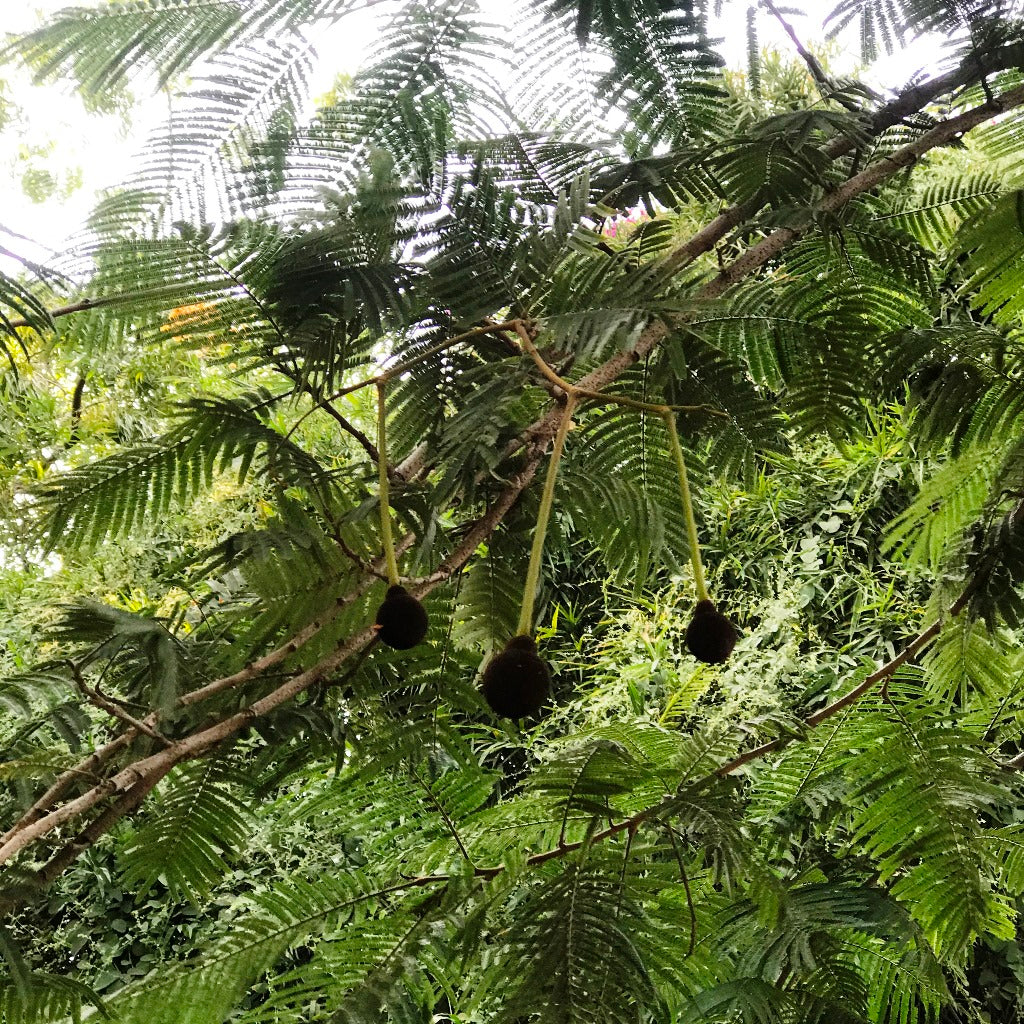African Locust Tree
Family
Mimosaceae
Origin
Indian Subcontinent
Description
Parkia biglobosa, also known as the African locust bean, is a perennial deciduous tree . It is found in a wide range of environments and is primarily grown for its pods that contain both a sweet pulp and valuable seeds. Parkia can grow into a large tree indeed with many spreading branches. The leaves are fine and feathery. The inflorescence, which happens in December-January is similar to a Badminton Ball hanging at the tip of a long thick stalk - the reason for its common name.
In the winter season, 1 - 2 ft branches, hanging from the leaf axil, bear rust coloured bead-like flower heads, which gradually gain size of a tennis ball - and the "flowers" bloom to spectacular white electric bulbs! The flowers in round white heads are prominent, hence the native name 'Chendul' , or ball. Leaves bipinnate with very numerous leaflets; rachis of leaf downy, 1 ft. of more long; pinnae 20-30 pair, 60 to 100 pairs leaflets, rigid, 1/4 in. long.
As a standing tree, locust bean may have a positive effect on the yield of other nearby crops.
Environment
Chanduphal prefers full sunlight and moderate watering. It grows well with Dry Soils / Drought, Well-Drained Soils, Fertile Loamy Soils.
Landscape Uses
African locust tree is commonly used as an ornamental tree





















